Archive
Fritz Henle
- Fritz
- Henle
- 09-06-1909
- Dortmund (DE)
- 31-01-1993
- San Juan (PE)
- Photographer
Fritz Henle was a German Jewish photographer who emigrated in 1936 to New York, where he worked as a photojournalist for various magazines. He also published several photobooks of his travels throughout North America and Asia.
Word Count: 35

Portrait of Fritz Henle by Herbert Matter, New York, 1937 (© Estate Fritz Henle). 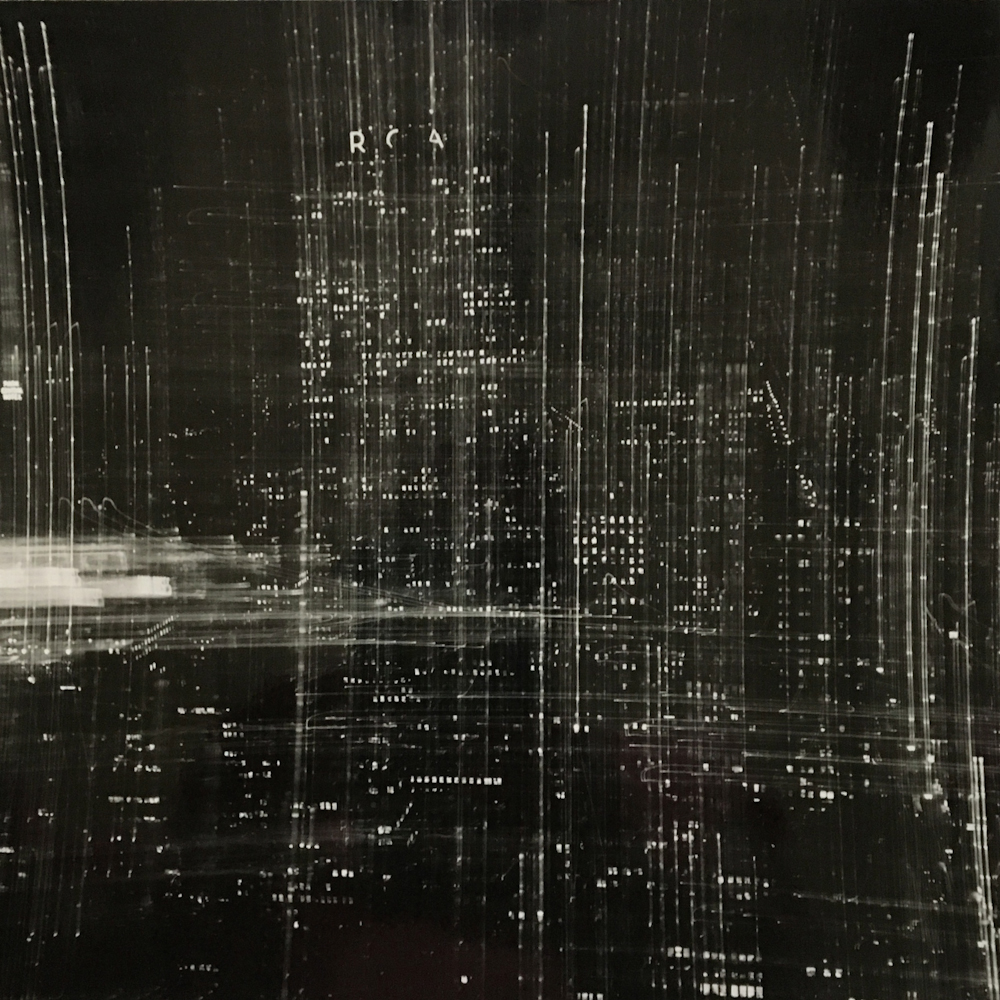
Fritz Henle, New York at Night, New York, 1936–1950s' (© 2021. Fritz Henle Estate). 
Fritz Henle, New York Reflections, New York, 1936–1950s' (© 2021. Fritz Henle Estate). 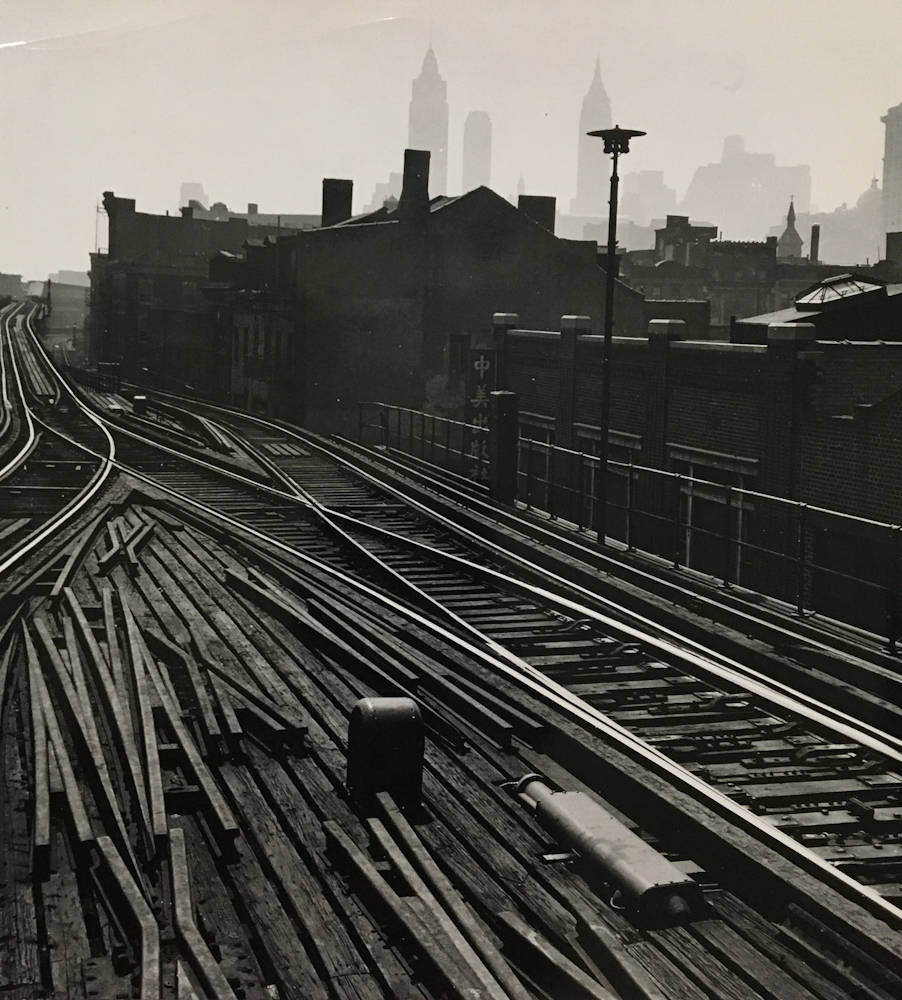
Fritz Henle, The L Train on Wall Street, New York, 1936–1950s' (© 2021. Fritz Henle Estate). 
Fritz Henle, Brooklyn Bridge and Baby Carriage, New York, 1936's-1950 (© 2021.Fritz Henle Estate) 
Fritz Henle, New York Skaters from the RCA Building, New York, 1936–1950s' (© 2021. Fritz Henle Estate). 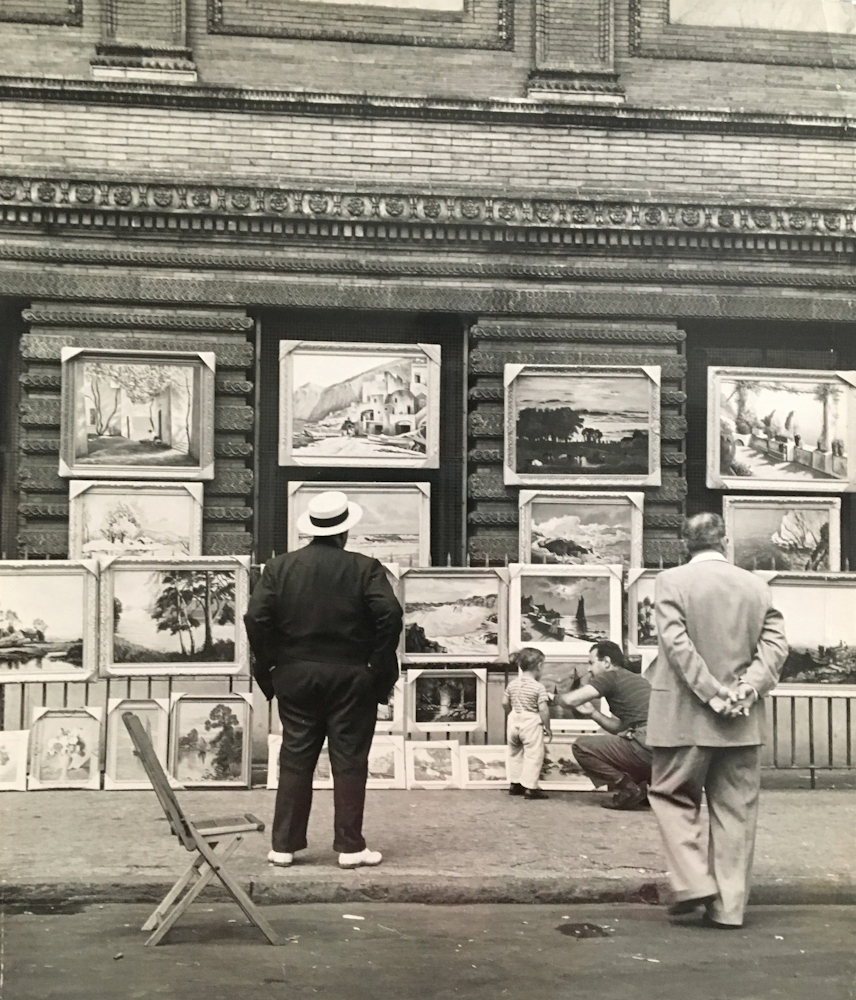
Fritz Henle, New York Art Critic at Washington Square, New York, 1936–1950s' (© 2021. Fritz Henle Estate). 
“The American Legion takes New York City.” Life, 4 October 1937, pp. 24f. 
Photographs by Fritz Henle for the reportage “Memo to: Walter Wander, Subject: 52nd Street.” Life, 29 November 1937, pp. 64–67 (Photo: Helene Roth). 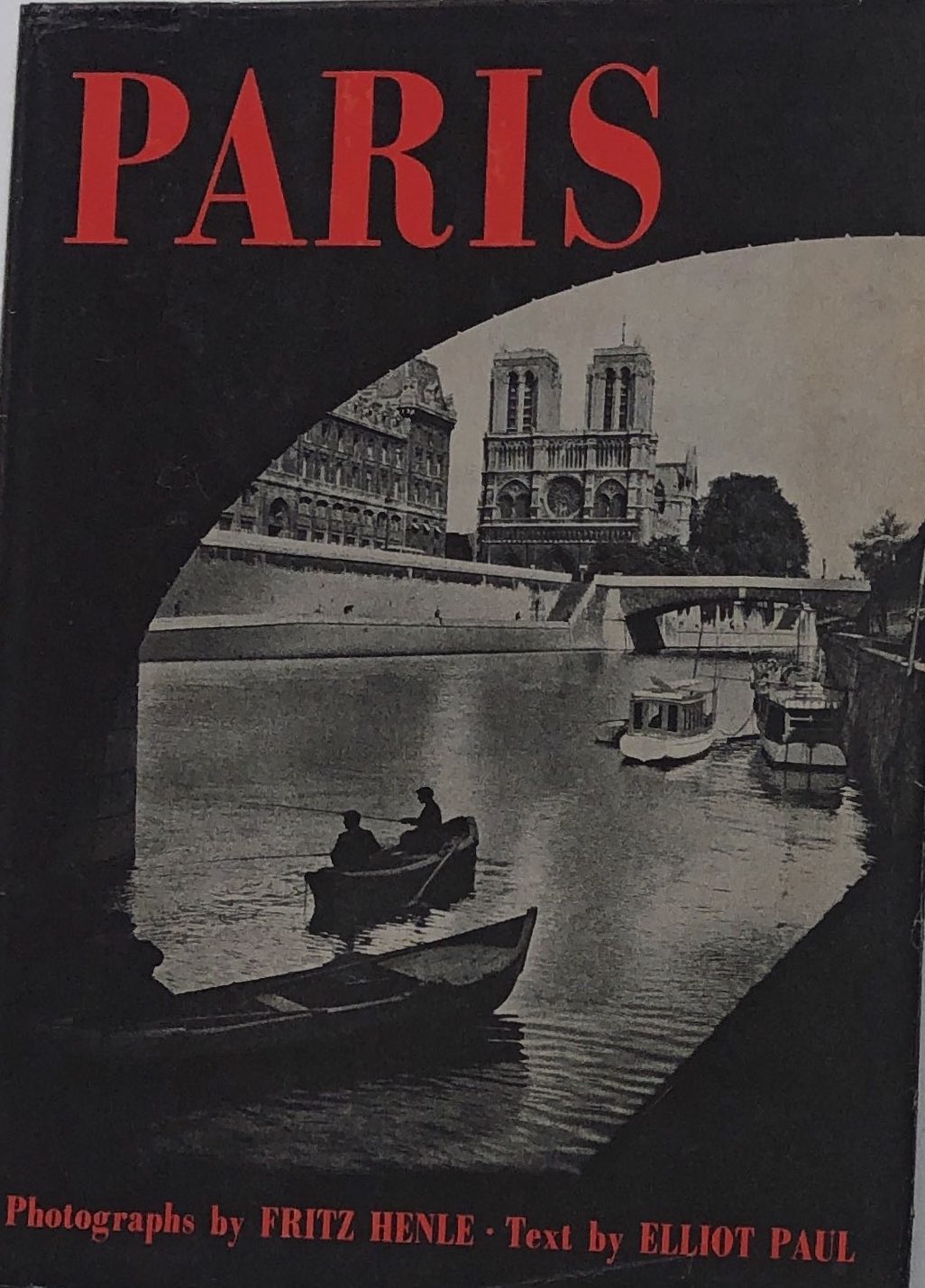
Cover of Paris photobook by Fritz Henle (Ziff Davis, 1947). 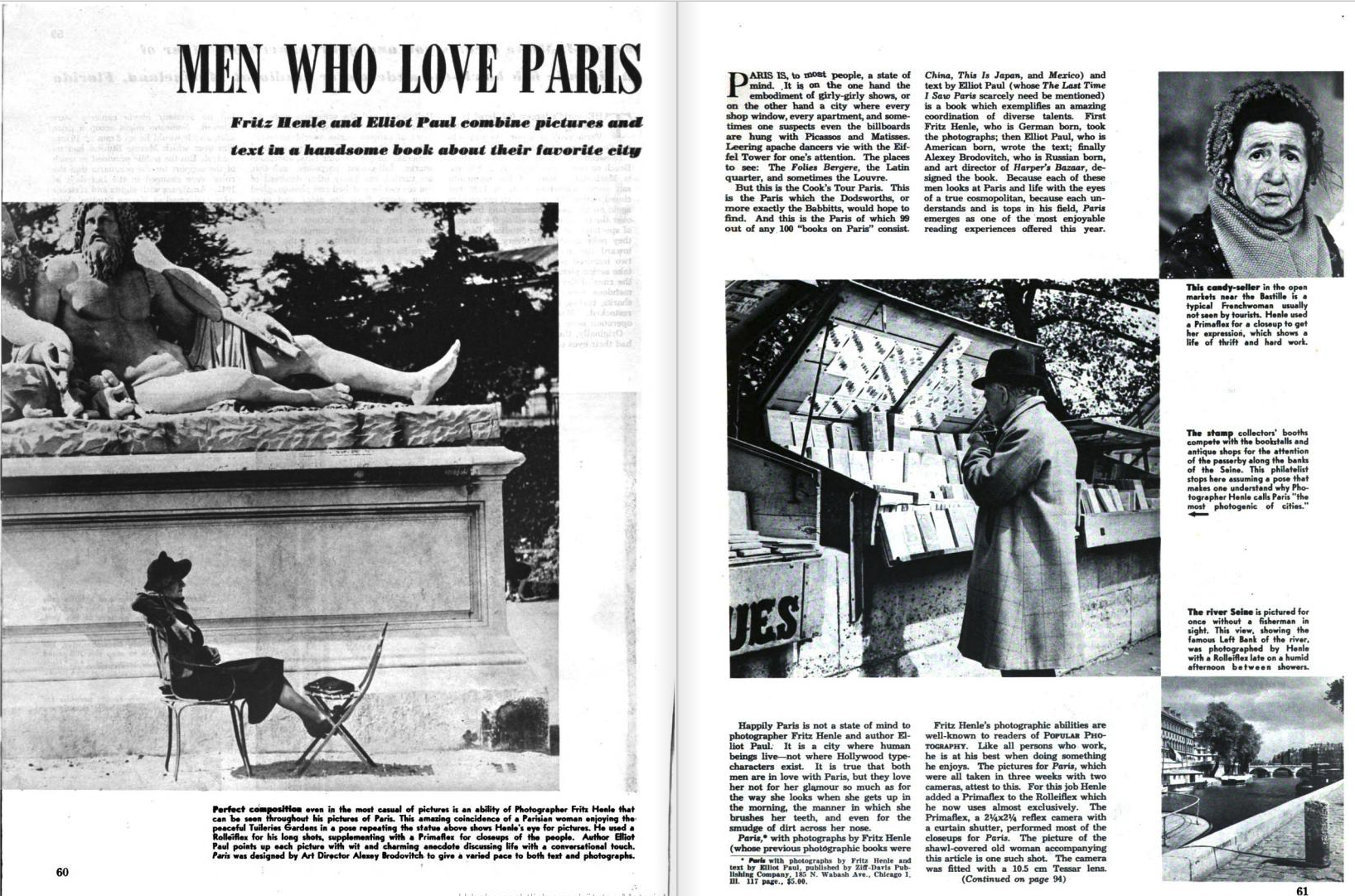
“Men who love Paris. Fritz Henle and Elliot Paul combine pictures and text in a handsome book about their favorite city.” Popular Photography, January 1947, pp. 60–61. 
Norris Harkness. "Simplicity. Fritz Henle’s fashion shots prove that the easy way is often the most effective." Popular Photography, August 1944, pp. 36–37. 
Victor Kepler. “There’s adventure in night photography.” Popular Photography, August 1942, pp. 28–29. 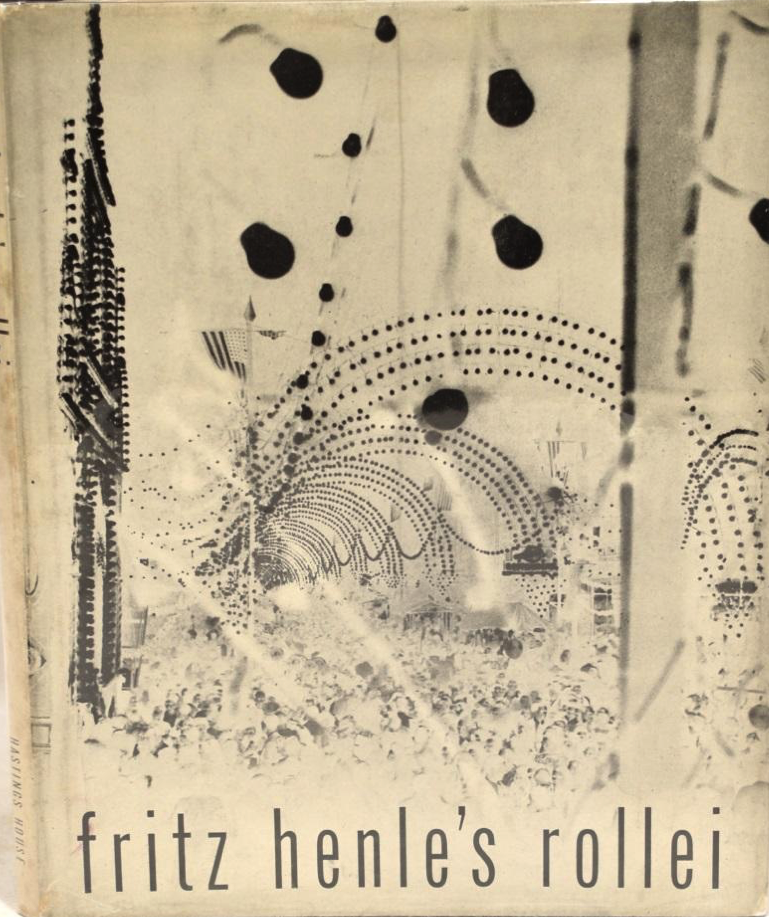
Cover of Fritz Henle’s rollei (Hastings House, 1950). 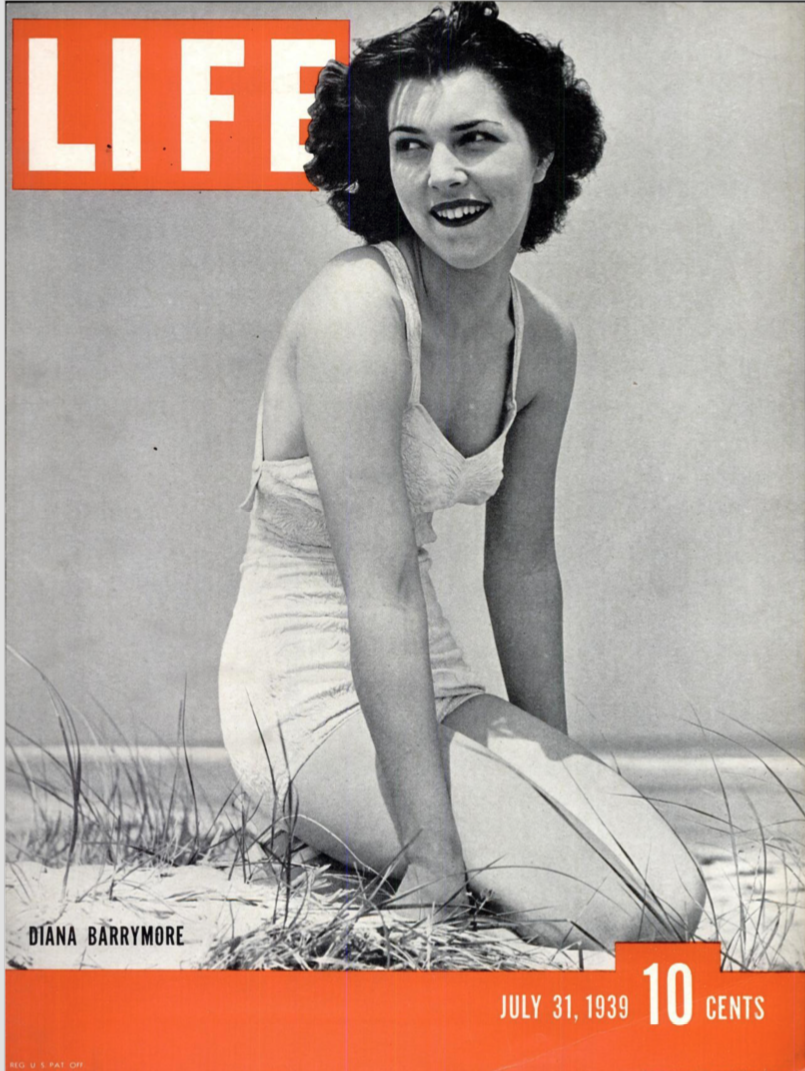
Cover photo by Fritz Henle, Life, 30 July 1939. Anonymous. "Around The World." The Courier News, 7 November, 1936, p. 10.
Anonymous. “Memo to: Walter Wander, Subject: 52nd Street, photographs by Fritz Henle." Life, 29 November 1937, pp. 64–67.
Anonymous. “Men who love Paris. Fritz Henle and Elliot Paul combine pictures and text in a handsome book about their favourite city.” Popular Photography, January 1947, p. 60f., 94.
Auer, Anna. Fotografie im Gespräch. Klinger, 2001.
Die Quadratur der Schönheit, exh. cat. Museum für Kunst und Kulturgeschichte Dortmund, Dortmund, 1994.
Displaced Visions. Émigré Photographers of the 20th Century, edited by Nissan N. Perez, exh. cat. The Israel Museum, Jerusalem, 2013.
Eyes on Paris. Paris im Fotobuch 1890 bis heute, edited by Hans-Michael Koetzle, exh. cat. Haus der Photographie in den Deichtorhallen, Hamburg, 2011.
Fritz Henle 1909–1993. Die Quadratur der Schönheit, exh. cat. Museum für Kunst und Kulturgeschichte Dortmund, Dortmund, 1994.
Gilbert, George. The Illustrated Worldwide Who’s Who of Jews in Photography. G. Gilbert, 1996.
Harkness, Norris. “Simplicity. Fritz Henle’s fashion shots prove that the easy way is often the most effective.” Popular Photography, August 1944, p. 36ff., 93f.
Henle, Fritz. Mexico. Ziff Davis, 1945.
Henle, Fritz. Paris. Ziff Davis, 1947.
Kepler, Victor. “There’s adventure in night photography.” Popular Photography, August 1942, pp. 28f.; pp. 80ff.
Morris, John Godfrey. Get the Picture. A Personal History of Photojournalism. University of Chicago Press, 2002.
Paris vor 50 Jahren. Fritz Henle Paris 1938, edited by Kurt Wettengl, exh. cat. Museum für Kunst und Kulturgeschichte der Stadt Dortmund, Dortmund 1989.
Smith, C. Zoe. “Emigré photography in America: contributions of German photojournalism from Black Star Picture Agency to Life magazine, 1933–1938.” (unpublished dissertation, School of Journalism in the Graduate College of the University of Iowa, Iowa City, December 1983).
Smith, C. Zoe. “Black Star Picture Agency: Life’s European Connection.” Journalism History, vol. 13, no. 1, 1986, pp. 19–25.
Smith, C. Zoe. “Die Bildagentur ‘Black Star’. Inspiration für eine neue Magazinfotografie in den USA.” Kommunikation visuell. Das Bild als Forschungsgegenstand – Grundlagen und Perspektiven, edited by Thomas Knieper and Marion G. Müller, Herbert von Halem, 2001, pp. 240–249.
Stone, Erika. Mostly People. Fotografien einer deutschen Emigrantin in New York, edited by Sibylle Appuhn-Radtke and Helmut Heß, exh. cat. Zentralinstitut für Kunstgeschichte, Munich, 2001.
Word Count: 366
My deepest thanks go to Tina Henle of the Estate Fritz Henle for providing me with information on and images by Fritz Henle.
Word Count: 23
New York City, US (Sept. 1936–Nov. 1936); Mexico City, Mexico (Nov. 1936–Sept. 1937); New York City, US (Sept. 1937–1942); Millwood, New York, US (1942–1944); New York City, US (1944–1958); St. Croix, Virgin Islands, US (1958–1993).
Bank Street, Greenwich Village, Manhattan, New York City (residence, 1936); 420 Lexington Avenue, Black Star Photo Agency, Midtown Manhattan, New York (workplace 1926–1942); 538 Fifth Avenue, Midtown Manhattan, New York City (studio, 1937–1942); 31 Beekman Place, Sutton Place, Manhattan, New York City (residence, 1938–1942); 667 Madison Avenue, Midtown Manhattan, New York City (studio, 1944–); 404 East 55th Street, Sutton Place, Manhattan (residence, 1944–?).
- New York
- Helene Roth. "Fritz Henle." METROMOD Archive, 2021, https://archive.metromod.net/viewer.p/69/2948/object/5138-11003262, last modified: 01-02-2022.
-
Walter SandersPhotographerNew York
Walter Sanders was a German émigré photographer. In 1938 he arrived in New York, where he worked from 1939 until the end of his life for the Black Star agency and, from 1944, for Life magazine.
Word Count: 33
Kurt SafranskiPicture AgentFounding MemberTeacherCartoonistPublisherIllustratorNew YorkKurt Safranski was one of the founding members of the Black Star photo agency, a teacher at the New School for Social Research and the author of photojournalistic articles and books.
Word Count: 31
Andreas FeiningerPhotographerWriterEditorNew YorkAndreas Feininger, was a German émigré photographer who arrived in New York with his wife Wysse Feininger in 1939. He started a lifelong career exploring the city's streets, working as a photojournalist and writing a large number of photography manuals.
Word Count: 39
Ruth BernhardPhotographerNew YorkRuth Bernhard was a German émigré photographer who lived in New York from the 1920s to the 1940s. Beside her series on female nudes, her place in the photography network, as well as in the New York queer scene, is unknown and understudied.
Word Count: 43
Erika StonePhotographerNew YorkErika Stone is a German émigré, who moved to New York with her parents and sister in December 1936, at the age of 12. She went on to carve out a career as photographer.
Word Count: 32
Lisette ModelPhotographerNew YorkLisette Model was an Austrian-born photographer who lived in New York with her husband Evsa Model after emigrating from France. Her street photographs capturing the curiosities of everyday life quickly caught the interest of museums and magazines.
Word Count: 37
Fred SteinPhotographerLawyerNew YorkAlways accompanied by his camera, the German émigré photographer Fred Stein discovered New York City during the 1940s and 1950s. His pictures provide an human and multifaceted view of the metropolis.
Word Count: 31
Alexey BrodovitchPhotographerArt DirectorGraphic DesignerNew YorkAlexey Brodovitch was a Belarus-born émigré graphic artist, art director and photographer who, from 1933, worked in New York for Harper’s Bazaar magazine and at the New School for Social Research.
Word Count: 31
Rolf TietgensPhotographerEditorWriterNew YorkRolf Tietgens was a German émigré photographer who arrived in New York in 1938. Although, in the course of his photographic career, his artistic and surrealist images were published and shown at exhibitions, his work, today, is very little known.
Word Count: 39
Tim GidalPhotographerPublisherArt HistorianNew YorkTim Gidal was a German-Jewish photographer, publisher and art historian emigrating in 1948 emigrated to New York. Besides his teaching career, he worked as a photojournalist and, along with his wife Sonia Gidal, published youth books.
Word Count: 35
Lilo HessPhotographerNew YorkThe German émigré Lilo Hess was an animal photographer working for the Museum for Natural History and the Bronx Zoo, as well being a freelance photographer and publisher of children's books.
Word Count: 31
Ruth JacobiPhotographerNew YorkRuth Jacobi was a German-speaking, Polish-born photographer who emigrated in 1935 to New York, where she opened a studio together with her sister Lotte Jacobi. She later had her own portrait studio.
Word Count: 31
Kurt KornfeldPublisherPicture AgentFounding MemberNew YorkKurt Kornfeld was a publisher and literary agent and a founding member of the Black Star photo agency in New York City after his emigration in 1936 to New York.
Word Count: 29
Ernest MayerPicture AgentFounding MemberPublisherNew YorkErnest Mayer was co-founder of the Black Star Publishing Company photo agency, which built a network for émigré photographers and the American magazine scene from the mid-1930s until the end of the 1950s.
Word Count: 34
Carola GregorPhotographerSculptorNew YorkThe German émigré photographer Carola Gregor was an animal and child photographer and published some of her work in magazines and books. Today her work and life are almost forgotten.
Word Count: 30
T. Lux FeiningerPhotographerPainterNew YorkLux T. Feininger was a German-American émigré photographer and painter and the brother of the photographer Andreas Feininger, arriving in 1936 in New York. Although he started taking photographs during the 1920s in Germany, Feininger is better known for his career as a painter and his photographic work is largely unacknowledged.
Word Count: 50
Black Star AgencyPhoto AgencyNew YorkThe German émigrés Kurt S(z)afranski, Ern(e)st Mayer and Kurt Kornfeld founded Black Star in 1936. The photo agency established was a well-run networking institution in New York.
Word Count: 31
Leco Photo ServicePhoto LabNew YorkLeco Photo Service was a photofinishing lab, highly-frequented and a contact hub for émigré photographers and photo agencies during the 1930s and 1940s, as well as a provider of employment for women in the photo industry.
Word Count: 36
SpiratonePhoto SupplierNew YorkSpiratone was a photo company and photo supplier founded in 1941 by the Austrian émigré family Hans (1888–1944) and Paula Spira (?–?) and their son Fred Spira (1924–2007).
Word Count: 24
Monkmeyer Photo ServicePhoto AgencyNew YorkThe Monkmeyer Photo Service photo agency was founded around 1935/36 by the German émigrés Hilde and Paul August Monkmeyer in New York City.
Word Count: 23
Hermann LandshoffPhotographerNew YorkBesides outdoor fashion shots, Hermann Landshoff was a portrait and street photographer. During his time in New York, he captured the cultural, artistic and intellectual émigré scene as well as his photographer colleagues.
Word Count: 33
Werner WolffPhotographerNew YorkWerner Wolff was forced to leave Germany in 1936 due to his Jewish background and emigrated via Hamburg to New York, where he could follow his career as photographer and photojournalist.
Word Count: 30
Josef BreitenbachPhotographerNew YorkOn arriving in New York in 1941, the German photographer Josef Breitenbach tried to restart as a portrait, street and experimental photographer, as well as a teacher of photo-history and techniques.
Word Count: 30
Lotte JacobiPhotographerNew YorkIn October 1935 the German émigré photographer Lotte Jacobi, together with her sister Ruth Jacobi, opened a photo studio on 57th Street. The two sisters had to leave their parents' photo studio in Berlin in the 1930s and emigrated to New York.
Word Count: 41
Lilly JossPhotographerNew YorkLilly Joss was an émigré freelance photographer in New York. She worked for the Black Star photo agency and magazines and was also a portrait and theatre photographer.
Word Count: 28
YllaPhotographerNew YorkYlla was an Austrian-born photographer who emigrated to New York in 1941. Specialising in animal photography, she produced not only studio photographs, but also shot outside on urban locations in the metropolis.
Word Count: 31
Ann Tizia LeitichJournalistAuthorArt CriticNew YorkAnn Tizia Leitich was an émigré Austrian author, journalist and art critic, who wrote essays, feuilletons and reviews on the American society and women for German and Austrian newspapers.
Word Count: 29
Rudy BurckhardtPhotographerFilmmakerPainterNew YorkRudy Burckhardt was a Swiss-born photographer, filmmaker and painter who emigrated from Basle to New York City in 1935. He was well networked within the emerging Abstract Expressionist art scene of 1940s' and 50s'.
Word Count: 33
Thames & HudsonPublishing HouseLondonThe emigrants Eva Feuchtwang (later Eva Neurath) and Walter Neurath founded the Thames & Hudson publishing house in 1949, which published art history books, photo books and collection catalogues.
Word Count: 28
New YorkBookPhotobookNew YorkIn 1932, after her remigration to Vienna, the Austrian journalist Ann Tizia Leitich published New York, an account of her life and writing experiences started as an emigrant in New York in the 1920s.
Word Count: 33